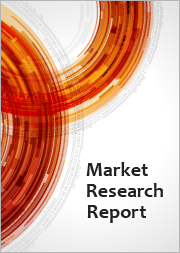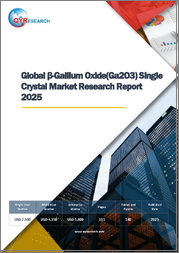
|
시장보고서
상품코드
1660948
반도체 재료 시장 보고서 : 재료, 용도, 최종 이용 산업, 지역별(2025-2033년)Semiconductor Materials Market Report by Material, Application, End Use Industry, and Region 2025-2033 |
||||||
반도체 재료 세계 시장 규모는 2024년 578억 달러에 달했습니다. 향후 IMARC Group은 2033년에는 782억 달러에 이르고, 2025-2033년의 성장률(CAGR)은 3.25%가 될 것으로 예측했습니다. 전자 수요 증가, 반도체 제조의 지속적인 기술 발전, 5G 및 전기자동차와 같은 신흥 용도의 성장은 시장 성장을 가속하는 주요 요인의 일부입니다.
반도체 재료는 금속과 절연체 사이의 중간 전기 전도도를 가지고 있습니다. 따라서 도체도 절연체도 아닙니다. 그러나 도핑 공정을 거쳐 빛, 열, 전압에 노출되면 전기를 통과하게 됩니다. 이 공정은 순수한 반도체에 소량의 불순물을 흡수하는 것을 포함합니다. 반도체 재료는 일반적으로 N형과 P형의 2유형로 나뉩니다. N형 반도체는 전자가 과잉인 반면, P형은 양전하가 많습니다. 반도체 재료는 가변 저항을 나타내며 한 방향으로 전류를 통과하기 쉽습니다.
반도체 재료는 전자 산업에서 필수적인 기술 혁신 중 하나입니다. 그 이유는 높은 전자 이동도, 넓은 온도 범위, 낮은 에너지 소비에 있습니다. 실리콘(Si), 게르마늄(Ge), 갈륨비소(GaAs) 등의 재료를 채택함으로써, 전자기기 제조업체는 전자제품을 무겁고, 휴대하기 어렵게 만드는 종래의 열전자 디바이스를 대체할 수 있었습니다. 그 결과, 이들 재료는 다이오드, 트랜지스터, 집적 칩 등 다양한 전자 부품의 제조에 폭넓게 응용되고 있습니다. 이 외에도, 이러한 소형 전자 부품을 이용할 수 있어 소형화된 디바이스의 제조가 더욱 용이해졌습니다. 기타 특전으로는 사물인터넷(IoT)의 출현과 스마트폰, 노트북, 태블릿 등의 소비자 일렉트로닉스에 대한 수요 증가로 인해 업계가 혜택을 받고 있습니다.
이 보고서에서 다루는 주요 질문
- 2025-2033년 세계 반도체 재료 시장의 예상 성장률은?
- 세계 반도체 재료 시장을 견인하는 주요 요인은?
- 세계 반도체 재료 시장에 대한 COVID-19의 영향은?
- 세계 반도체 재료 시장의 재료별 내역은?
- 세계 반도체 재료 시장의 용도별 내역은?
- 세계 반도체 재료 시장의 최종 이용 산업별 내역은?
- 세계 반도체 재료 시장의 주요 지역은?
- 세계 반도체 재료 시장에서 주요 기업은?
목차
제1장 서문
제2장 조사 범위와 조사 방법
- 조사의 목적
- 이해관계자
- 데이터 소스
- 1차 정보
- 2차 정보
- 시장 추정
- 상향식 접근
- 하향식 접근
- 조사 방법
제3장 주요 요약
제4장 소개
- 개요
- 주요 업계 동향
제5장 세계 반도체 재료 시장
- 시장 개요
- 시장 실적
- COVID-19의 영향
- 시장 분석 : 재료별
- 시장 분석 : 용도별
- 시장 내역 : 최종 이용 산업별
- 시장 분석 : 지역별
- 시장 예측
제6장 시장 분석 : 재료별
- 실리콘 카바이드
- 시장 동향
- 시장 예측
- 갈륨 망간 비소
- 시장 동향
- 시장 예측
- 구리 인듐 갈륨 셀레늄
- 시장 동향
- 시장 예측
- 이황화 몰리브덴
- 시장 동향
- 시장 예측
- 텔루르화 비스무트
- 시장 동향
- 시장 예측
제7장 시장 분석 : 용도별
- 제조
- 시장 동향
- 시장 분석 : 유형별
- 실리콘 웨이퍼
- 전자가스
- 포토 마스크
- 포토레지스트 관련 제품
- CMP 재료
- 포토레지스트
- 습식 화학약품
- 기타
- 시장 예측
- 패키지
- 시장 동향
- 시장 분석 : 유형별
- 리드 프레임
- 유기 기질
- 세라믹 패키지
- 캡슐화 수지
- 본딩 와이어
- 다이 부착 재료
- 기타
- 시장 예측
제8장 시장 내역: 최종 이용 산업별
- 소비자 일렉트로닉스
- 시장 동향
- 시장 예측
- 제조
- 시장 동향
- 시장 예측
- 자동차
- 시장 동향
- 시장 예측
- 에너지 및 유틸리티
- 시장 동향
- 시장 예측
- 기타
- 시장 동향
- 시장 예측
제9장 시장 분석 : 지역별
- 북미
- 시장 동향
- 시장 예측
- 유럽
- 시장 동향
- 시장 예측
- 아시아태평양
- 시장 동향
- 시장 예측
- 중동 및 아프리카
- 시장 동향
- 시장 예측
- 라틴아메리카
- 시장 동향
- 시장 예측
제10장 SWOT 분석
- 개요
- 강점
- 약점
- 기회
- 위협
제11장 밸류체인 분석
제12장 Porter's Five Forces 분석
- 개요
- 구매자의 협상력
- 공급기업의 협상력
- 경쟁도
- 신규 참가업체의 위협
- 대체품의 위협
제13장 가격 분석
제14장 경쟁 구도
- 시장 구조
- 주요 기업
- 주요 기업 프로파일
- BASF SE
- LG Chem Ltd
- Indium Corporation
- Hitachi Chemical Co. Ltd
- KYOCERA Corporation
- Henkel AG & Company KGAA
- Sumitomo Chemical Co. Ltd
- DuPont de Nemours Inc.
- International Quantum Epitaxy PLC.
- Nichia Corporation
- Intel Corporation
- UTAC Holdings Ltd
The global semiconductor materials market size reached USD 57.8 Billion in 2024. Looking forward, IMARC Group expects the market to reach USD 78.2 Billion by 2033, exhibiting a growth rate (CAGR) of 3.25% during 2025-2033. The increasing demand for electronics, continuous technological advancements in semiconductor manufacturing, and growth in emerging applications like 5G and electric vehicles are some of the key factors driving the growth of the market.
Semiconductor materials have an electrical conductivity range between that of a metal and an insulator. As a result, they neither demonstrate the properties of a conductor nor an insulator. However, they acquire the potential of conducting electricity when they are exposed to light, heat, or voltage post the doping process. This process involves the incorporation of small amounts of impurities to pure semiconductors. Semiconductor materials are generally divided into two categories, namely, N-type and P-type. The N-type semiconductors have an excess of electrons, whereas the P-type materials have a higher positive charge. Semiconductor materials show variable resistance and they pass current easily in one direction.
Semiconductor materials represent one of the essential innovations in the electronics industry. This can be accredited to their high electron mobility, wide temperature limits and low energy consumption. By employing material such as silicon (Si), germanium (Ge) and gallium arsenide (GaAs), electronics manufacturers have been able to replace traditional thermionic devices that made electronic items heavy and non-portable. Consequently, these materials find vast applications in the manufacturing of different electronic components such as diodes, transistors and integrated chips. In addition to this, the availability of these small electronic components has further facilitated the production of miniaturized devices. Additionally, the industry is benefitting from the advent of the Internet of Things (IoT) and the growing demand for consumer electronics, such as smartphones, laptops and tablets.
Key Market Segmentation:
Breakup by Material:
- Silicon Carbide
- Gallium Manganese Arsenide
- Copper Indium Gallium Selenide
- Molybdenum Disulfide
- Bismuth Telluride
Breakup by Application:
- Fabrication
- Silicon Wafers
- Electronic gases
- Photomasks
- Photoresist ancillaries
- CMP Materials
- Photoresists
- Wet chemicals
- Others
- Packaging
- Leadframes
- Organic Substrates
- Ceramic Packages
- Encapsulation Resins
- Bonding Wires
- Die-Attach Materials
- Others
Breakup by End Use Industry:
- Consumer Electronics
- Manufacturing
- Automotive
- Energy and Utility
- Others
Breakup by Region:
- North America
- Europe
- Asia Pacific
- Middle East and Africa
- Latin America
Competitive Landscape:
The report has also analysed the competitive landscape of the market with some of the key players being BASF SE, LG Chem Ltd, Indium Corporation, Hitachi Chemical Co. Ltd, KYOCERA Corporation, Henkel AG & Company KGAA, Sumitomo Chemical Co. Ltd, DuPont de Nemours Inc., International Quantum Epitaxy PLC., Nichia Corporation, Intel Corporation, UTAC Holdings Ltd, etc.
Key Questions Answered in This Report
- 1.What is the expected growth rate of the global semiconductor materials market during 2025-2033?
- 2.What are the key factors driving the global semiconductor materials market?
- 3.What has been the impact of COVID-19 on the global semiconductor materials market?
- 4.What is the breakup of the global semiconductor materials market based on the material?
- 5.What is the breakup of the global semiconductor materials market based on the application?
- 6.What is the breakup of the global semiconductor materials market based on the end use industry?
- 7.What are the key regions in the global semiconductor materials market?
- 8.Who are the key players/companies in the global semiconductor materials market?
Table of Contents
1 Preface
2 Scope and Methodology
- 2.1 Objectives of the Study
- 2.2 Stakeholders
- 2.3 Data Sources
- 2.3.1 Primary Sources
- 2.3.2 Secondary Sources
- 2.4 Market Estimation
- 2.4.1 Bottom-Up Approach
- 2.4.2 Top-Down Approach
- 2.5 Forecasting Methodology
3 Executive Summary
4 Introduction
- 4.1 Overview
- 4.2 Key Industry Trends
5 Global Semiconductor Materials Market
- 5.1 Market Overview
- 5.2 Market Performance
- 5.3 Impact of COVID-19
- 5.4 Market Breakup by Material
- 5.5 Market Breakup by Application
- 5.6 Market Breakup by End Use Industry
- 5.7 Market Breakup by Region
- 5.8 Market Forecast
6 Market Breakup by Material
- 6.1 Silicon Carbide
- 6.1.1 Market Trends
- 6.1.2 Market Forecast
- 6.2 Gallium Manganese Arsenide
- 6.2.1 Market Trends
- 6.2.2 Market Forecast
- 6.3 Copper Indium Gallium Selenide
- 6.3.1 Market Trends
- 6.3.2 Market Forecast
- 6.4 Molybdenum Disulfide
- 6.4.1 Market Trends
- 6.4.2 Market Forecast
- 6.5 Bismuth Telluride
- 6.5.1 Market Trends
- 6.5.2 Market Forecast
7 Market Breakup by Application
- 7.1 Fabrication
- 7.1.1 Market Trends
- 7.1.2 Market Breakup by Type
- 7.1.2.1 Silicon Wafers
- 7.1.2.2 Electronic Gases
- 7.1.2.3 Photomasks
- 7.1.2.4 Photoresist Ancillaries
- 7.1.2.5 CMP Materials
- 7.1.2.6 Photoresists
- 7.1.2.7 Wet Chemicals
- 7.1.2.8 Others
- 7.1.3 Market Forecast
- 7.2 Packaging
- 7.2.1 Market Trends
- 7.2.2 Market Breakup by Type
- 7.2.2.1 Leadframes
- 7.2.2.2 Organic Substrates
- 7.2.2.3 Ceramic Packages
- 7.2.2.4 Encapsulation Resins
- 7.2.2.5 Bonding Wires
- 7.2.2.6 Die-Attach Materials
- 7.2.2.7 Others
- 7.2.3 Market Forecast
8 Market Breakup by End Use Industry
- 8.1 Consumer Electronics
- 8.1.1 Market Trends
- 8.1.2 Market Forecast
- 8.2 Manufacturing
- 8.2.1 Market Trends
- 8.2.2 Market Forecast
- 8.3 Automotive
- 8.3.1 Market Trends
- 8.3.2 Market Forecast
- 8.4 Energy and Utility
- 8.4.1 Market Trends
- 8.4.2 Market Forecast
- 8.5 Others
- 8.5.1 Market Trends
- 8.5.2 Market Forecast
9 Market Breakup by Region
- 9.1 North America
- 9.1.1 Market Trends
- 9.1.2 Market Forecast
- 9.2 Europe
- 9.2.1 Market Trends
- 9.2.2 Market Forecast
- 9.3 Asia Pacific
- 9.3.1 Market Trends
- 9.3.2 Market Forecast
- 9.4 Middle East and Africa
- 9.4.1 Market Trends
- 9.4.2 Market Forecast
- 9.5 Latin America
- 9.5.1 Market Trends
- 9.5.2 Market Forecast
10 SWOT Analysis
- 10.1 Overview
- 10.2 Strengths
- 10.3 Weaknesses
- 10.4 Opportunities
- 10.5 Threats
11 Value Chain Analysis
12 Porters Five Forces Analysis
- 12.1 Overview
- 12.2 Bargaining Power of Buyers
- 12.3 Bargaining Power of Suppliers
- 12.4 Degree of Competition
- 12.5 Threat of New Entrants
- 12.6 Threat of Substitutes
13 Price Analysis
14 Competitive Landscape
- 14.1 Market Structure
- 14.2 Key Players
- 14.3 Profiles of Key Players
- 14.3.1 BASF SE
- 14.3.2 LG Chem Ltd
- 14.3.3 Indium Corporation
- 14.3.4 Hitachi Chemical Co. Ltd
- 14.3.5 KYOCERA Corporation
- 14.3.6 Henkel AG & Company KGAA
- 14.3.7 Sumitomo Chemical Co. Ltd
- 14.3.8 DuPont de Nemours Inc.
- 14.3.9 International Quantum Epitaxy PLC.
- 14.3.10 Nichia Corporation
- 14.3.11 Intel Corporation
- 14.3.12 UTAC Holdings Ltd



















